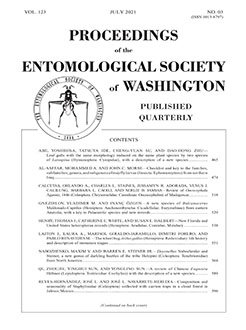The purpose of this study was to analyze the composition and seasonality of the necrocolous Staphylinidae assemblage and necrophilous Staphylinidae ensemble collected with carrion traps in the Parque Estatal Bosque de Arce (PEBA), Talpa de Allende, Jalisco, Mexico. Five carrion traps baited with squid were placed during the months of July 2015 to June 2016. The necrocolous assemblage was composed of 3444 specimens belonging to 11 subfamilies, 12 tribes, nine subtribes, 25 genera, and 54 morphospecies. The necrophilous ensemble included 3389 specimens in six subfamilies, six tribes, four subtribes, 11 genera, and 18 morphospecies. Of these, 61.1% are predators and 38.9% are saprophages. Specimens belonging to the subfamily Aleocharinae were not incorporated in our analyses of the necrocolous assemblage nor the necrophilous ensemble. Small-sized species (1.5–4 mm) and medium-sized species (5–9 mm) have a greater abundance than large-size species (10–15.65 mm). Seasonality was a significant factor in the composition of the necrocolous assemblage and the necrophilous ensemble in PEBA. Lordithon obliquus (Sharp) and Xanthopygus rufipennis Sharp are recorded for the first time in the state of Jalisco.
How to translate text using browser tools
28 October 2021
Composition and Seasonality of Staphylinidae (Coleoptera) Collected with Carrion Traps in a Cloud Forest in Jalisco, Mexico
José L. Reyes-Hernández,
José L. Navarrete-Heredia
ACCESS THE FULL ARTICLE
assemblage
ensemble
new state records
predators
rank-abundance curves
saprophages
Staphylininae





